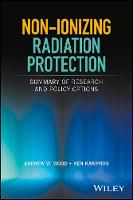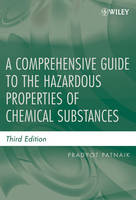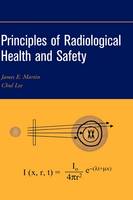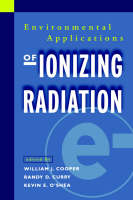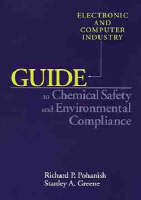Radiation Safety
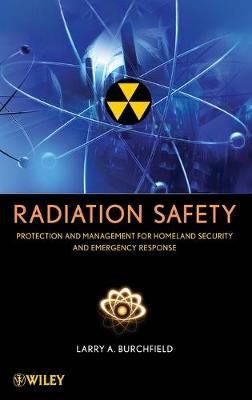 -15%
portes grátis
-15%
portes grátis
Radiation Safety
Protection and Management for Homeland Security and Emergency Response
Burchfield, Larry A.
John Wiley & Sons Inc
07/2009
320
Dura
Inglês
9780471793335
15 a 20 dias
610
Foreword xvii
Acknowledgments xix
1 Nuclear Fear-The Godzilla of All Fears 1
1.1 The Bombing of Hiroshima and Nagasaki 2
1.2 Nuclear Fallout in America 2
1.3 WMDs: Witnesses of Mass Destruction 3
1.4 Fear and the Film Industry 4
1.5 Celluloid Spies 5
1.6 Atomic Nature Run Amok 6
1.7 Post-War Nuclear Reactions 7
1.8 The Specter of Cold War 8
1.9 The Fearful Fifties 9
1.10 Dr. Strangelove and Learning to Love the Bomb 10
1.11 Nuclear Terror Revisited 12
1.12 Chernobyl's Impact on Contemporary Views of Nuclear Energy 13
1.13 The Myth of the Lone Madman 15
1.14 Fear of an Unknown Atom 15
2 Terrorism and Nuclear Fire 17
2.1 A Prophetic Warning 17
2.2 History of Terrorism 18
2.3 Terrorism (Un)Defined 20
2.4 Legal Taxonomy of Terrorism 23
2.5 The Defining Principles of Terrorism 27
2.6 Nation States: Fuel for Nuclear Fire 28
2.7 Global Mass Media: The Oxygen of Terrorism 30
2.8 Extremists Groups: The Spark that Ignites Terrorism 31
2.9 Nuclear Terrorism: The Ultimate Nightmare 35
3 Radiation and Radioactivity Concepts 37
3.1 What, Exactly, Is Radiation? 38
3.2 Units of Radioactivity 40
3.3 The Different Types of Radioactive Decay 40
3.4 Measuring Radioactivity 41
3.5 Environmental Radiation 43
3.6 Radiation from Nuclear Power Plants 44
3.7 The Benefits of Radiation on Health and Medicine 45
3.8 The Benefits of Radiation on Agriculture 47
3.9 The Benefits of Radiation on Industry 48
3.10 The Benefits of Radiation on National Security 49
3.11 The Benefits of Radiological and Nuclear Material on International Security 50
4 Nuclear Countermeasures and Nuclear Security 53
4.1 Security of Radiation Sources 54
4.2 Atomic Authorization 55
4.3 Safety of Radiation Sources 56
4.4 Enforcing International Standards of Safety 57
4.5 Meeting Global Needs for Energy 58
4.6 Difficulties of Radioactive Disposal 59
4.7 A Radiation Role Model 61
4.8 Nuclear Applications to Increase Public Safety and National Security 62
4.9 Current Nuclear and Radiation Countermeasures 64
5 Nuclear Events and Incidents 65
5.1 The Search for Nuclear Substances 66
5.2 Diplomatic Reasoning 67
5.3 Inferring Nuclear Intent 69
5.4 Nuclear Arms in the Wrong Hands 70
5.5 A More Active Defense 72
5.6 Should Diplomacy Fail 73
5.7 A Closer Look at Nuclear Weapons 73
5.8 Nuclear Blast Force 75
5.9 Nuclear Thermal Force 75
5.10 Radioactive Force 75
5.11 Radiological Dispersion Devices 77
6 Radiological Incidents Management and Planning 79
6.1 Threat Assessment 80
6.2 Medical Stockpiling 81
6.3 Medical Development 83
6.4 Readying the Response Infrastructure 85
6.5 Evaluating the Medical Countermeasure Enterprise 86
6.6 The Good News: Areas of Improvement 88
6.7 Protective Action Guidelines 90
6.8 The Role of the Military in a Radiological Emergency 91
7 Role of the First Responder 97
7.1 Structure of the First Response Team's Patterns of Action 98
7.2 Role of the First Response Team 98
7.3 Protection of Responders and the Public 99
7.3.1 Basic Precautions 99
7.3.2 Registration of Emergency Response Personnel 100
7.4 Lessons Learned from First Response to Past Emergencies 100
7.5 Manage the Medical Response 102
7.6 Manage Criminal and Terrorist Threats After a Radiological Event 103
7.7 Launching the First Response 104
7.8 Incident Command 104
7.9 Members of the First Response Team 105
7.10 Preliminary Assessment and Response 107
7.11 Emergency Response Team 108
7.12 Incident Commander Action Guide 109
7.12.1 Observe and Assess 110
7.12.2 Save Lives and Prevent Escalation 110
7.12.3 Extend the Response 110
7.13 Resource Coordinator Action Guide 111
7.14 Fire Departments Action Guide 111
7.15 Emergency Medical Service Action Guide 112
7.16 Law Enforcement/Security Team Action Guide 113
7.17 Forensic Evidence Management Team Action Guide 113
7.18 Public Information Officer Action Guide 114
7.19 Crisis Communication Tips 115
7.20 Local Hospital Action Guide 115
7.21 National EOC Action Guide 116
7.22 First Responder Monitor Action Guide 117
8 Action Plans 119
8.1 Assess Hazard and Establish Security Area 119
8.2 Personnel Protection Guidelines 120
8.3 Public Protection Guidelines 121
8.4 Public Registration 122
8.5 Monitor the Public and Responders 123
8.6 Public Decontamination 124
8.7 Response Contamination Control 125
8.8 Monitoring and Decontamination of Vehicles and Equipment 126
8.9 Field Triage for Mass Casualties 127
9 Medicaltreatment of Radiological Injuries 129
9.1 The Radiological Effects of RDDs 129
9.2 Radioactivity and Its Impact on the Body 130
9.3 Symptoms and Syndromes 132
9.4 Emergency Assessment 133
9.5 Signs of Dangerous Radiation Dosages 134
9.6 Treatments for Radiation Exposure 136
9.7 Post-Radiation Procedures 137
9.8 Psychological Side Effects 138
9.9 Psychological First Aid 139
9.10 Treating Terror 140
10 Cleanup and Decontamination After a Radiological Incident 141
10.1 Differences between Chemical, Biological, and Radiological 141
10.2 Decontamination Differences for Fallout and a RDD 142
10.3 Who will be in Charge of Cleanup and Decontamination? 143
10.4 Radiological Cleanup Overview and Objectives 144
10.5 Radiological Cleanup Decision Making 145
10.6 Initial Cleanup Scoping 146
10.7 Stakeholder Outreach and Stakeholder Working Group 147
10.8 Evaluation of Cleanup Options 147
10.9 Specific Guidelines for Cleanup and Decontamination 148
10.10 The "Do Nothing" Strategy 148
10.11 Physical Removal Strategy 149
10.12 Physical Entrapment Strategy 149
10.13 Chemical Decontamination Strategy 150
10.14 Use of Isotope Dilution for Decontamination 151
10.15 Priorities for Decontamination 152
11 Conclusions 155
11.1 Nuclear Terror: Are We Prepared Internationally? 155
11.2 Who is Internationally Responsible for Nuclear Countermeasures? 156
11.3 Nuclear Terror: Are We Prepared Nationally? 158
11.4 What We Know About the Inevitable 159
Appendix A Radioactive Contamination Monitoring 161
A.1 Introduction 162
A.2 Types of Nuclear Detection Equipment 163
A.3 Dose Rate Meters 164
A.4 Dosimeters 164
A.5 Surface Contamination Meters 166
A.6 Airborne Contamination Meters and Gas Monitors 166
A.7 Basic Radiation Instrument Components 168
A.8 Ionization Chambers as Gas-Filled Detectors 168
A.9 Proportional Counters and Gas Amplification 169
A.10 Geiger-Mueller Counters and Detector Output 170
A.11 Practical Ionization Chamber Instruments 171
A.12 Practical Proportional Counters 172
A.13 Practical Geiger-Mueller Counters 173
A.14 Scintillation Counters 173
A.15 Practical Bulk Scintillation Counters 174
A.16 Practical Scintillation Counter Contamination Monitors 175
A.17 Solid State Detectors 175
A.18 Practical Solid State Detectors 176
A.19 Testing Dose Rate Meters 177
A.20 Procedures for Using a Dose Rate Meter 178
A.21 Testing and Calibration of Surface Contamination Meters 179
A.22 Use of a Surface Contamination Meter 179
A.23 Procedures for Using a Surface Contamination Meter 180
A.24 Special Surface Contamination Monitoring Techniques 181
A.25 The Measurement of Airborne Contamination 182
A.26 Criteria for the Selection of Monitoring Instruments 182
Appendix B List of Acronyms and Abbreviations 185
Appendix C Radiologicalterms 195
Appendix D Radiological Attack-Radiological
Dispersal Devices-Incident Planning Guide 217
Appendix E Federal Agencies Governing the Immediate Response to a Radiological Event 231
E.1 Introduction 231
E.1.1 Purpose 231
E.1.2 Scope 232
E.1.3 Policies 233
E.1.4 Headquarters Planning and Preparedness 236
E.2 Situation 237
E.3 Planning Assumptions 238
E.4 Responsibilities 239
E.4.1 General 239
E.4.2 Coordinating Agencies 242
E.5 Key Federal Radiological Resources/Assets 248
E.6 Concept of Operations 252
E.6.1 General 252
E.6.2 Notification 252
E.6.3 Activation 253
E.6.4 ICS Implementation 255
E.7 Response Activities 255
E.8 Recovery 261
E.9 Federal Capabilities and Assets 273
Appendix F Potential Isotopes Likely to Be Used in a Radiological Dispersion Device 275
Bibliography 281
Index 285
Foreword xvii
Acknowledgments xix
1 Nuclear Fear-The Godzilla of All Fears 1
1.1 The Bombing of Hiroshima and Nagasaki 2
1.2 Nuclear Fallout in America 2
1.3 WMDs: Witnesses of Mass Destruction 3
1.4 Fear and the Film Industry 4
1.5 Celluloid Spies 5
1.6 Atomic Nature Run Amok 6
1.7 Post-War Nuclear Reactions 7
1.8 The Specter of Cold War 8
1.9 The Fearful Fifties 9
1.10 Dr. Strangelove and Learning to Love the Bomb 10
1.11 Nuclear Terror Revisited 12
1.12 Chernobyl's Impact on Contemporary Views of Nuclear Energy 13
1.13 The Myth of the Lone Madman 15
1.14 Fear of an Unknown Atom 15
2 Terrorism and Nuclear Fire 17
2.1 A Prophetic Warning 17
2.2 History of Terrorism 18
2.3 Terrorism (Un)Defined 20
2.4 Legal Taxonomy of Terrorism 23
2.5 The Defining Principles of Terrorism 27
2.6 Nation States: Fuel for Nuclear Fire 28
2.7 Global Mass Media: The Oxygen of Terrorism 30
2.8 Extremists Groups: The Spark that Ignites Terrorism 31
2.9 Nuclear Terrorism: The Ultimate Nightmare 35
3 Radiation and Radioactivity Concepts 37
3.1 What, Exactly, Is Radiation? 38
3.2 Units of Radioactivity 40
3.3 The Different Types of Radioactive Decay 40
3.4 Measuring Radioactivity 41
3.5 Environmental Radiation 43
3.6 Radiation from Nuclear Power Plants 44
3.7 The Benefits of Radiation on Health and Medicine 45
3.8 The Benefits of Radiation on Agriculture 47
3.9 The Benefits of Radiation on Industry 48
3.10 The Benefits of Radiation on National Security 49
3.11 The Benefits of Radiological and Nuclear Material on International Security 50
4 Nuclear Countermeasures and Nuclear Security 53
4.1 Security of Radiation Sources 54
4.2 Atomic Authorization 55
4.3 Safety of Radiation Sources 56
4.4 Enforcing International Standards of Safety 57
4.5 Meeting Global Needs for Energy 58
4.6 Difficulties of Radioactive Disposal 59
4.7 A Radiation Role Model 61
4.8 Nuclear Applications to Increase Public Safety and National Security 62
4.9 Current Nuclear and Radiation Countermeasures 64
5 Nuclear Events and Incidents 65
5.1 The Search for Nuclear Substances 66
5.2 Diplomatic Reasoning 67
5.3 Inferring Nuclear Intent 69
5.4 Nuclear Arms in the Wrong Hands 70
5.5 A More Active Defense 72
5.6 Should Diplomacy Fail 73
5.7 A Closer Look at Nuclear Weapons 73
5.8 Nuclear Blast Force 75
5.9 Nuclear Thermal Force 75
5.10 Radioactive Force 75
5.11 Radiological Dispersion Devices 77
6 Radiological Incidents Management and Planning 79
6.1 Threat Assessment 80
6.2 Medical Stockpiling 81
6.3 Medical Development 83
6.4 Readying the Response Infrastructure 85
6.5 Evaluating the Medical Countermeasure Enterprise 86
6.6 The Good News: Areas of Improvement 88
6.7 Protective Action Guidelines 90
6.8 The Role of the Military in a Radiological Emergency 91
7 Role of the First Responder 97
7.1 Structure of the First Response Team's Patterns of Action 98
7.2 Role of the First Response Team 98
7.3 Protection of Responders and the Public 99
7.3.1 Basic Precautions 99
7.3.2 Registration of Emergency Response Personnel 100
7.4 Lessons Learned from First Response to Past Emergencies 100
7.5 Manage the Medical Response 102
7.6 Manage Criminal and Terrorist Threats After a Radiological Event 103
7.7 Launching the First Response 104
7.8 Incident Command 104
7.9 Members of the First Response Team 105
7.10 Preliminary Assessment and Response 107
7.11 Emergency Response Team 108
7.12 Incident Commander Action Guide 109
7.12.1 Observe and Assess 110
7.12.2 Save Lives and Prevent Escalation 110
7.12.3 Extend the Response 110
7.13 Resource Coordinator Action Guide 111
7.14 Fire Departments Action Guide 111
7.15 Emergency Medical Service Action Guide 112
7.16 Law Enforcement/Security Team Action Guide 113
7.17 Forensic Evidence Management Team Action Guide 113
7.18 Public Information Officer Action Guide 114
7.19 Crisis Communication Tips 115
7.20 Local Hospital Action Guide 115
7.21 National EOC Action Guide 116
7.22 First Responder Monitor Action Guide 117
8 Action Plans 119
8.1 Assess Hazard and Establish Security Area 119
8.2 Personnel Protection Guidelines 120
8.3 Public Protection Guidelines 121
8.4 Public Registration 122
8.5 Monitor the Public and Responders 123
8.6 Public Decontamination 124
8.7 Response Contamination Control 125
8.8 Monitoring and Decontamination of Vehicles and Equipment 126
8.9 Field Triage for Mass Casualties 127
9 Medicaltreatment of Radiological Injuries 129
9.1 The Radiological Effects of RDDs 129
9.2 Radioactivity and Its Impact on the Body 130
9.3 Symptoms and Syndromes 132
9.4 Emergency Assessment 133
9.5 Signs of Dangerous Radiation Dosages 134
9.6 Treatments for Radiation Exposure 136
9.7 Post-Radiation Procedures 137
9.8 Psychological Side Effects 138
9.9 Psychological First Aid 139
9.10 Treating Terror 140
10 Cleanup and Decontamination After a Radiological Incident 141
10.1 Differences between Chemical, Biological, and Radiological 141
10.2 Decontamination Differences for Fallout and a RDD 142
10.3 Who will be in Charge of Cleanup and Decontamination? 143
10.4 Radiological Cleanup Overview and Objectives 144
10.5 Radiological Cleanup Decision Making 145
10.6 Initial Cleanup Scoping 146
10.7 Stakeholder Outreach and Stakeholder Working Group 147
10.8 Evaluation of Cleanup Options 147
10.9 Specific Guidelines for Cleanup and Decontamination 148
10.10 The "Do Nothing" Strategy 148
10.11 Physical Removal Strategy 149
10.12 Physical Entrapment Strategy 149
10.13 Chemical Decontamination Strategy 150
10.14 Use of Isotope Dilution for Decontamination 151
10.15 Priorities for Decontamination 152
11 Conclusions 155
11.1 Nuclear Terror: Are We Prepared Internationally? 155
11.2 Who is Internationally Responsible for Nuclear Countermeasures? 156
11.3 Nuclear Terror: Are We Prepared Nationally? 158
11.4 What We Know About the Inevitable 159
Appendix A Radioactive Contamination Monitoring 161
A.1 Introduction 162
A.2 Types of Nuclear Detection Equipment 163
A.3 Dose Rate Meters 164
A.4 Dosimeters 164
A.5 Surface Contamination Meters 166
A.6 Airborne Contamination Meters and Gas Monitors 166
A.7 Basic Radiation Instrument Components 168
A.8 Ionization Chambers as Gas-Filled Detectors 168
A.9 Proportional Counters and Gas Amplification 169
A.10 Geiger-Mueller Counters and Detector Output 170
A.11 Practical Ionization Chamber Instruments 171
A.12 Practical Proportional Counters 172
A.13 Practical Geiger-Mueller Counters 173
A.14 Scintillation Counters 173
A.15 Practical Bulk Scintillation Counters 174
A.16 Practical Scintillation Counter Contamination Monitors 175
A.17 Solid State Detectors 175
A.18 Practical Solid State Detectors 176
A.19 Testing Dose Rate Meters 177
A.20 Procedures for Using a Dose Rate Meter 178
A.21 Testing and Calibration of Surface Contamination Meters 179
A.22 Use of a Surface Contamination Meter 179
A.23 Procedures for Using a Surface Contamination Meter 180
A.24 Special Surface Contamination Monitoring Techniques 181
A.25 The Measurement of Airborne Contamination 182
A.26 Criteria for the Selection of Monitoring Instruments 182
Appendix B List of Acronyms and Abbreviations 185
Appendix C Radiologicalterms 195
Appendix D Radiological Attack-Radiological
Dispersal Devices-Incident Planning Guide 217
Appendix E Federal Agencies Governing the Immediate Response to a Radiological Event 231
E.1 Introduction 231
E.1.1 Purpose 231
E.1.2 Scope 232
E.1.3 Policies 233
E.1.4 Headquarters Planning and Preparedness 236
E.2 Situation 237
E.3 Planning Assumptions 238
E.4 Responsibilities 239
E.4.1 General 239
E.4.2 Coordinating Agencies 242
E.5 Key Federal Radiological Resources/Assets 248
E.6 Concept of Operations 252
E.6.1 General 252
E.6.2 Notification 252
E.6.3 Activation 253
E.6.4 ICS Implementation 255
E.7 Response Activities 255
E.8 Recovery 261
E.9 Federal Capabilities and Assets 273
Appendix F Potential Isotopes Likely to Be Used in a Radiological Dispersion Device 275
Bibliography 281
Index 285


